Minnesota United played their second game against the Portland Timbers in four days. They secured a 1-0 victory against the Timbers in MLS on Sunday in a low-intensity affair, as it was obvious both sides were saving their energy for the US Open Cup semi-final on Wednesday night. Both sides made several changes to their line-ups coming into this match, as they played brought in some key players who had missed the match at the weekend.
As the primary cup competition in the United States, the US Open Cup presents an opportunity to secure a major cup and qualify for the 2020 CONCACAF Champions League. Minnesota United has had a retched two seasons in MLS, having some of the worst defensive seasons in MLS history, but they have turned it around in their third season. They have already set a team record for most points and shutouts in a season, with 11 matches still to play. Also, their victory over Portland on Sunday moved them up to second place in the MLS Western Conference.
Portland Timbers have had a very up-and-down season in the league, but their run to the semi-finals of the US Open Cup has been impressive. They have defeated three other MLS sides en route, including Supporters Shield front-runner LAFC, scoring seven goals while only allowing one goal.
After the slower pace of the match at the weekend, this match was very different. The match on Sunday looked predetermined to end as a scoreless draw until a Portland handball in the 89th minute allowed Ethan Finlay to steal all three points for the home side. Both sides played with more energy and it was evident from the opening whistle.
Darwin Quintero gave Minnesota United the lead in the 22nd minute after Portland got caught on another handball in their penalty area. Portland was able to level the game just before half-time through Brian Fernández, as the Loons became disorganised and sloppy from a corner kick. Mason Toye scored the winning goal for the home side in the 64th minute, as Minnesota United was able to reassert control and book their place in the final.
Lineups
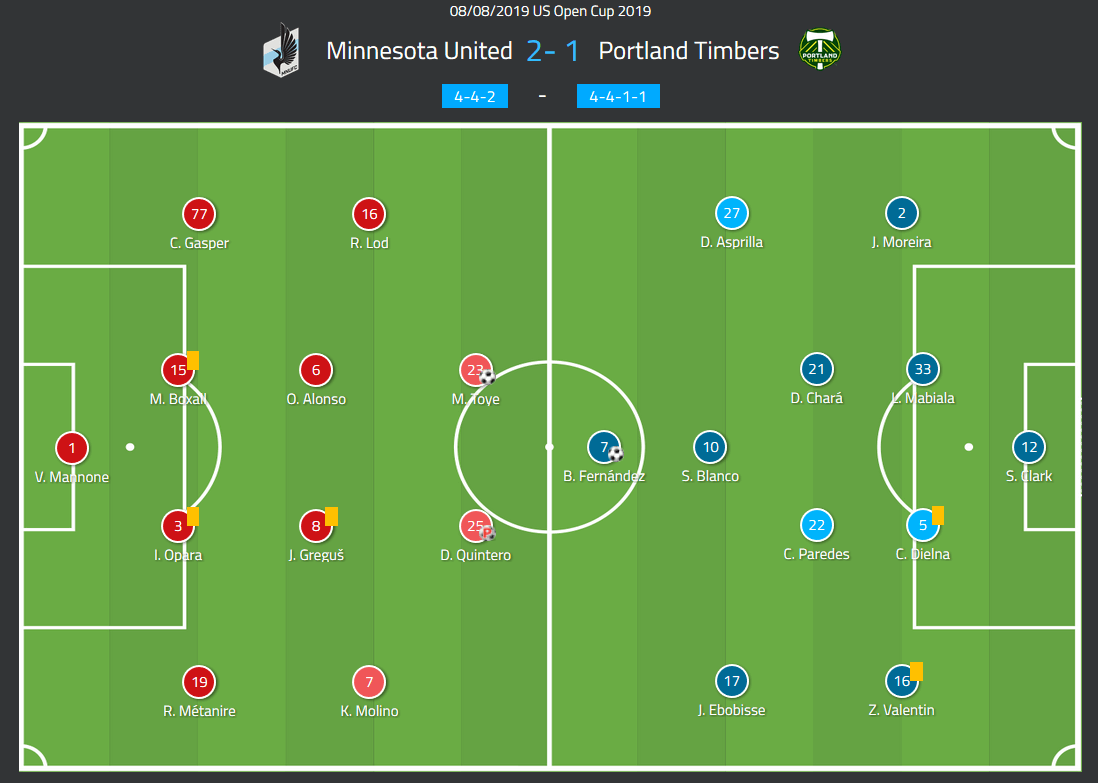
Adrian Heath made three changes over the side that beat Portland on Sunday. All the changes involved the Loons attack, with Ethan Finlay starting the match on the bench. Finnish International Robin Lod made his first start for Minnesota United after joining the MLS side two weeks earlier from Sporting de Gijon in Spain. Angelo Rodriguez and Miguel Ibarra were both left out of the gameday squad altogether, due to the lower limit for international players in the US Open Cup, and they were replaced by Darwin Quintero, returning from a one-match suspension, and Mason Toye.
Giovanni Savarese made four changes, in hopes of avoiding back-to-back losses against Minnesota United. Julio Cascante was left out of the squad, replaced at centre-back by Claude Dielna. Diego Valeri, Marvin Loria, and Jorge Villafaña were dropped to the bench, replaced in the starting XI by Dairon Asprilla, Jeremy Obobisse, and Zarek Valentin.
Keys to the match
This tactical analysis will look at Portland’s attack struggles. Also, we’ll look at the effectiveness of Kevin Molino and Mason Toye’s combination play. Finally, we’ll look at Minnesota United’s sloppy spell around half-time, and how they adjusted to reassert control in the second half.
Portland Timbers spins its wheels against a lower line
One of the most important players for Portland Timbers this season has been Brian Fernández. He joined the Timbers as a Designated Player in May 2019 from Nacaxa in Liga MX. Since his transfer, he’s scored eight goals and one assist in 11 matches (nine starts). This included five goals from his first four appearances. Unfortunately for Giovanni Savarese, the opposition in MLS seems to have adjusted to the Argentine attacker. Since his last start, he’s only scored twice in his last six appearances.
Fernández is at his most dangerous when he has space to attack into. He has proven to be lethal against a high defensive line. His speed allows him to play off the last defender and burst behind them to get on balls played over the top. Minnesota United did a quality job in ensuring that he struggled to find space, playing a deeper line than they have in many other matches this season. Fernández was unable to deal with the physicality of MNUFC’s centre-back pairing of Ike Opara and Michael Boxall, so he would often drift into the outside channels and try to get in behind.
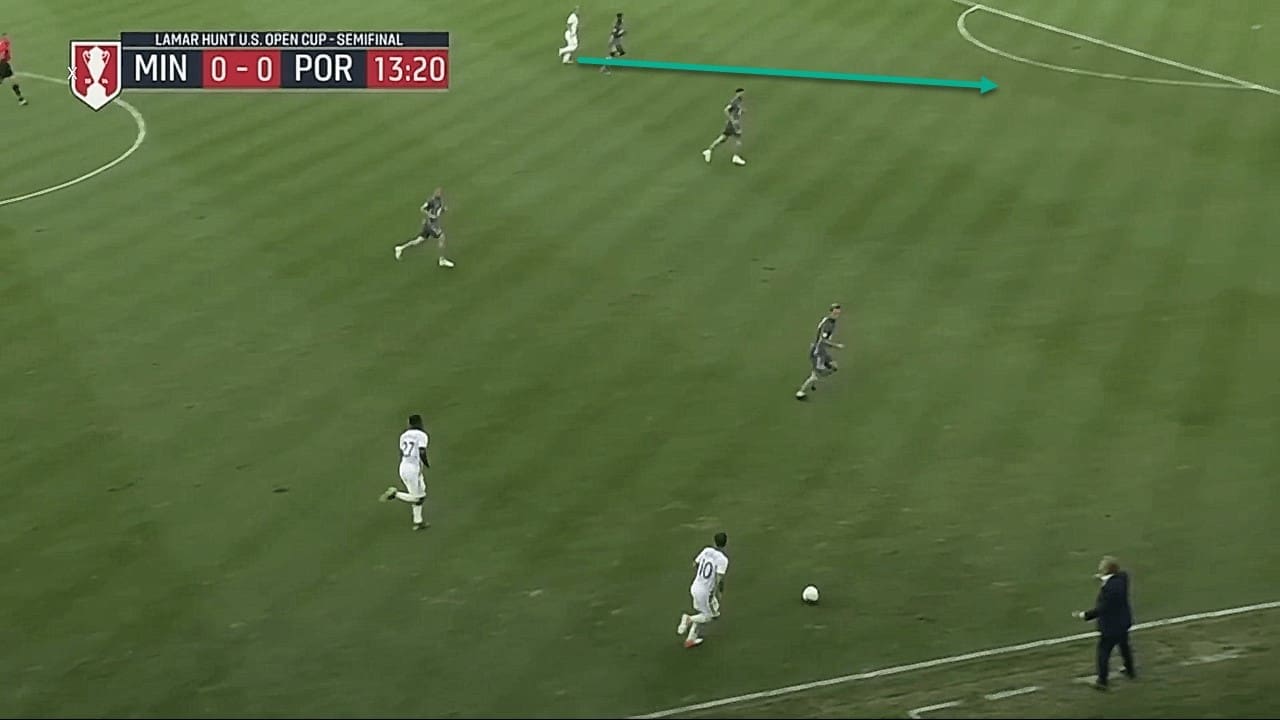
As the image above shows, Fernández starts in the channel outside Opara, looking to run in behind the defender in his blindside. You can see that both Minnesota centre-backs are close, and holding a consistent line to ensure that Fernández can’t take advantage of a lapse.
With Minnesota United playing a deeper line, and the centre-backs doing a good job not allowing Fernández to get behind them, the Timbers striker started working in the wide areas. His runs would take him in behind the full-backs, but he still had problems finding space. He kept trying to attack the space behind Chase Gaspar, Minnesota United’s left-back. However, Gaspar plays a much more defensive role than Roman Métanire does on the right side. As a result, his movement into that area achieved very little.
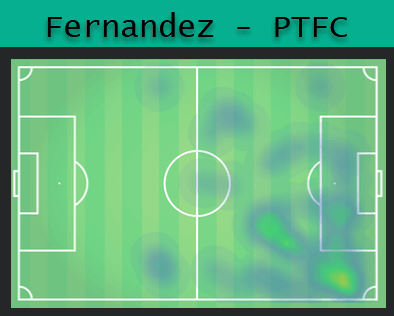
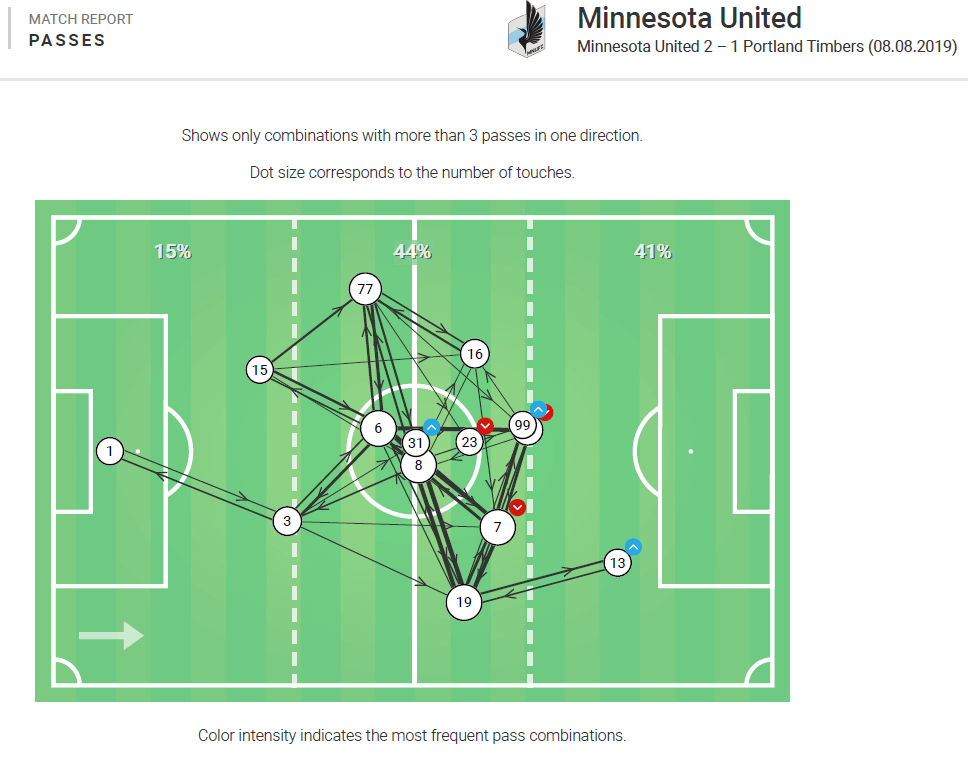
Another issue for Portland was how isolated Fernández was throughout the match. In the few instances when he was able to get behind Minnesota’s defence, he had very few options to combine with. Additionally, the Loons were quick to double mark him and get assistance to limit his dribbling options.
The images below tell the story of Fernández in this match. He makes a run behind Minnesota’s backline, in the channel between Boxall and Gaspar. Goalkeeper Steve Clark plays a long ball forward that Fernández can get on the end of. He has very little support, and as a result, he is confronted by both Ike Opara and Michael Boxall. As he dribbles, his support is slow coming up the pitch, and he is soon facing three defenders. Outnumbered, he loses the ball, and his run behind comes to nothing.
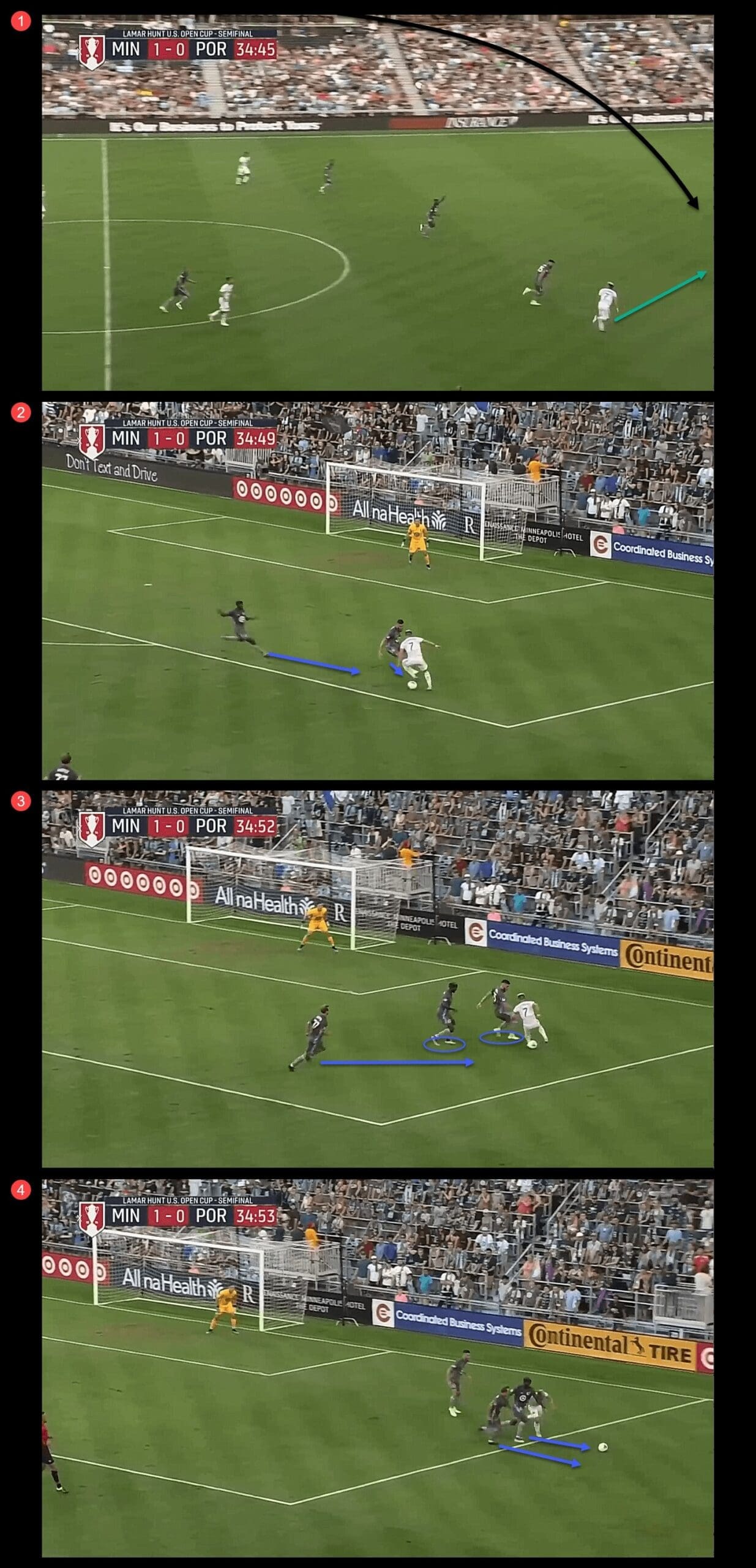
The Molino-Toye attack clicks for Minnesota United
Mason Toye has struggled for minutes since he was selected seventh overall in the 2018 MLS Superdraft. He’s had to go on loan a couple of times to get playing time, but he’s now getting regular minutes and has taken advantage of it. Since the middle of June, he’s been responsible for scoring six goals and one assist in 10 appearances (three starts).
He started in this match in place of Designated Player Angelo Rodriguez, due to international player limits in the US Open Cup. He offers a different threat to Rodriguez, who played against Portland on Sunday. Adrian Heath likes Rodriguez ability to hold up play and combine with Darwin Quintero who plays as a second striker. Rodriguez is also a strong aerial presence and can play well with his back to goal.
Toye is more mobile than the Colombian Rodriguez, and he is more dangerous with the ball at his feet. He is also more willing to make the runs in behind the defensive line, and this meant that Portland had to deal with the threat of both Darwin and Toye trying to get behind them.
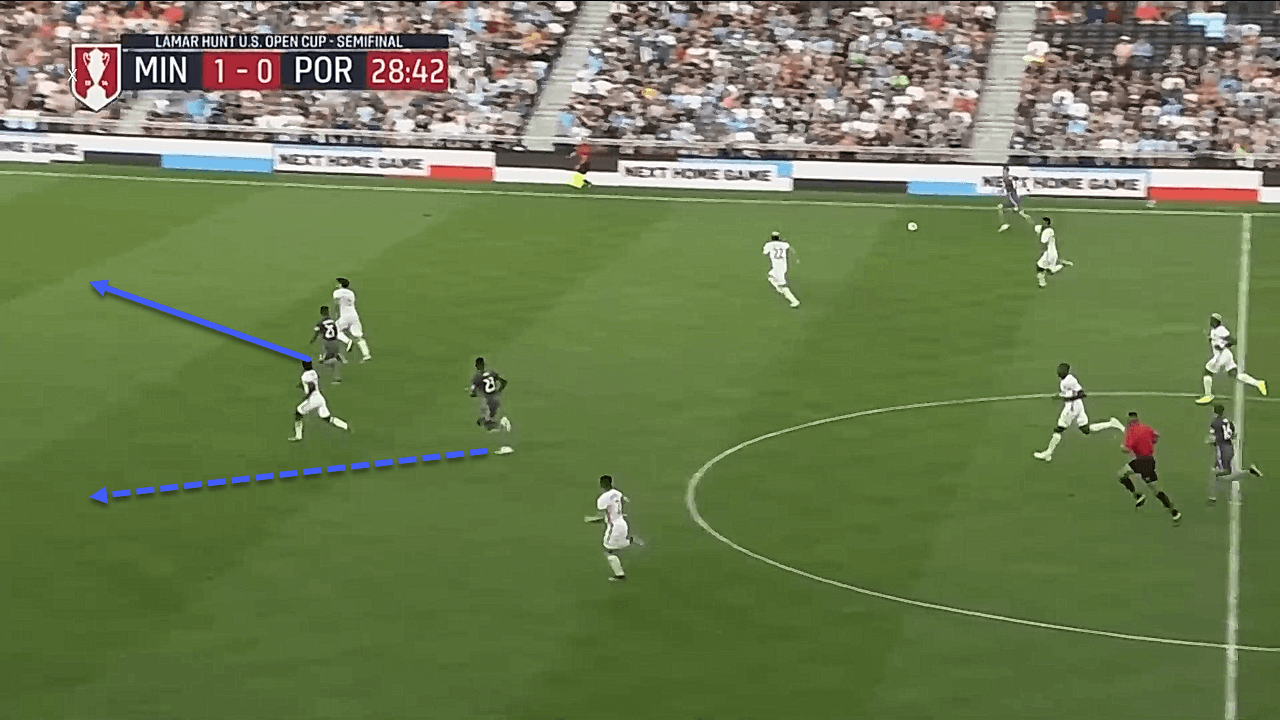
Quintero has become more dangerous this season as a second striker, presenting a dangerous goal-scoring threat. When he arrived in MLS last season, he played as more of a standard #10 and was primarily a creator. The main change has been his positioning, as he often now the most advanced attacker for the Loons. As the other sides in MLS have adjusted to his new threat, his effectiveness has been reduced as they recognise him as more of a threat to get behind the defence.
With Darwin Quintero looking to test Portland’s defensive line, the wide players of Minnesota United played different roles than they did over the weekend. Robin Lod and Kevin Molino both played more in the half-space than Finlay and Ibarra did on Sunday. Lod operated in the left half-space, looking to combine with Toye and Darwin, while Molino would often come centrally in a deeper position to help progress the ball from defence into attack.
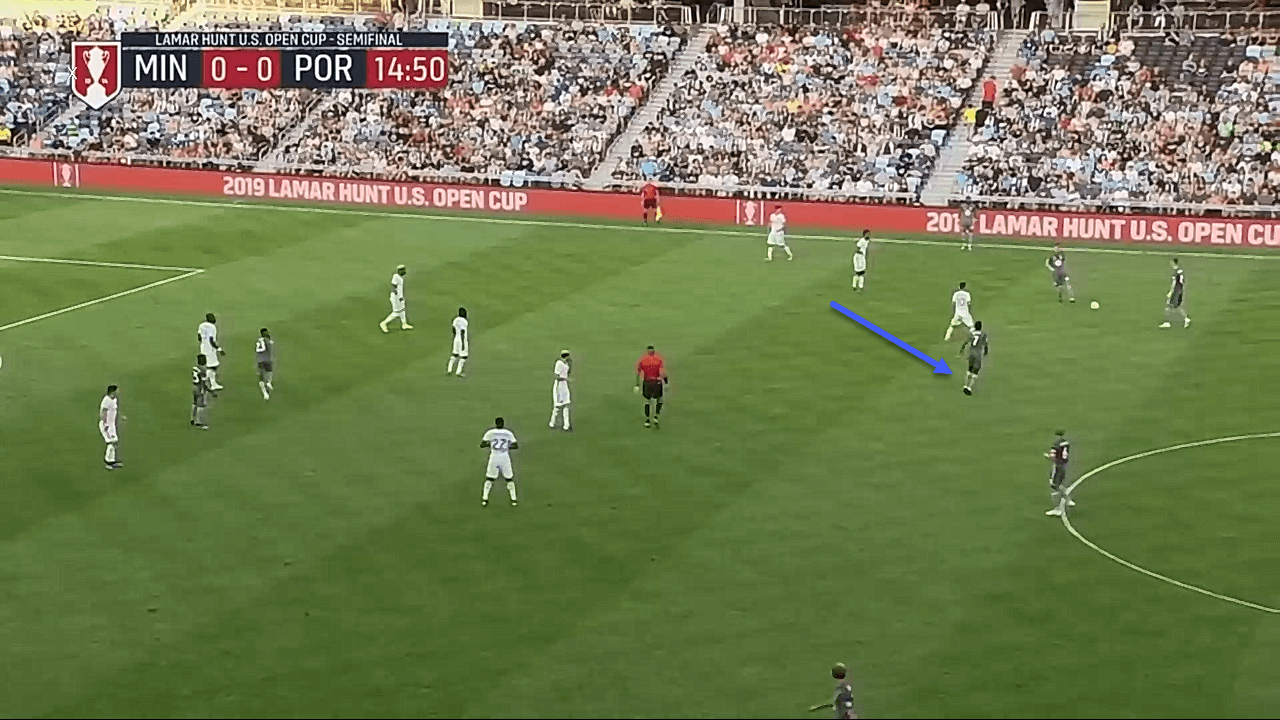
After Portland scored just before half-time, Minnesota United struggled to regain control of the match. It took an exceptional bit of skill by Kevin Molino, who received the ball in a central position before playing a perfectly weighted ball over the Portland Timbers backline. Mason Toye timed his run perfectly and got behind the centre-back to slot home an easy transition goal.
With Robin Lod, Mason Toye, and Darwin threatening the Portland defence, it opened up the space between the lines for Kevin Molino to operate in. If there is one weakness in Minnesota’s central midfield pairing of Jan Gregus and Osvaldo Alonso, it’s that they are slow to get up the pitch and operate in the final third. This wasn’t an issue in this match as Molino drifted in between the lines and operated in front of Gregus and Alonso. Molino’s movement was an important part of Minnesota’s attack in the final third.
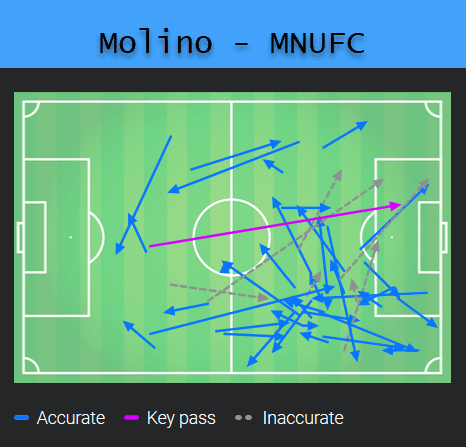
Portland gets back into the match, but Minnesota recovers.
After Darwin scored the penalty in the first half, Minnesota United took their foot off the pedal and allowed Portland back into the match. The Loons passing got slower, and the forwards were less willing to pressure Portland’s defence. At the same time, Portland was more aggressive in their counter-pressing.
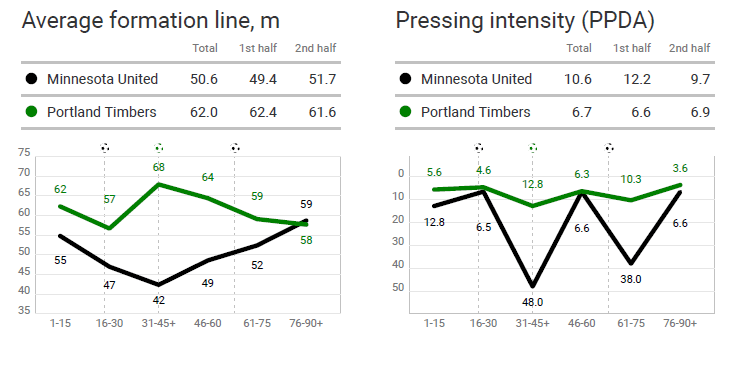
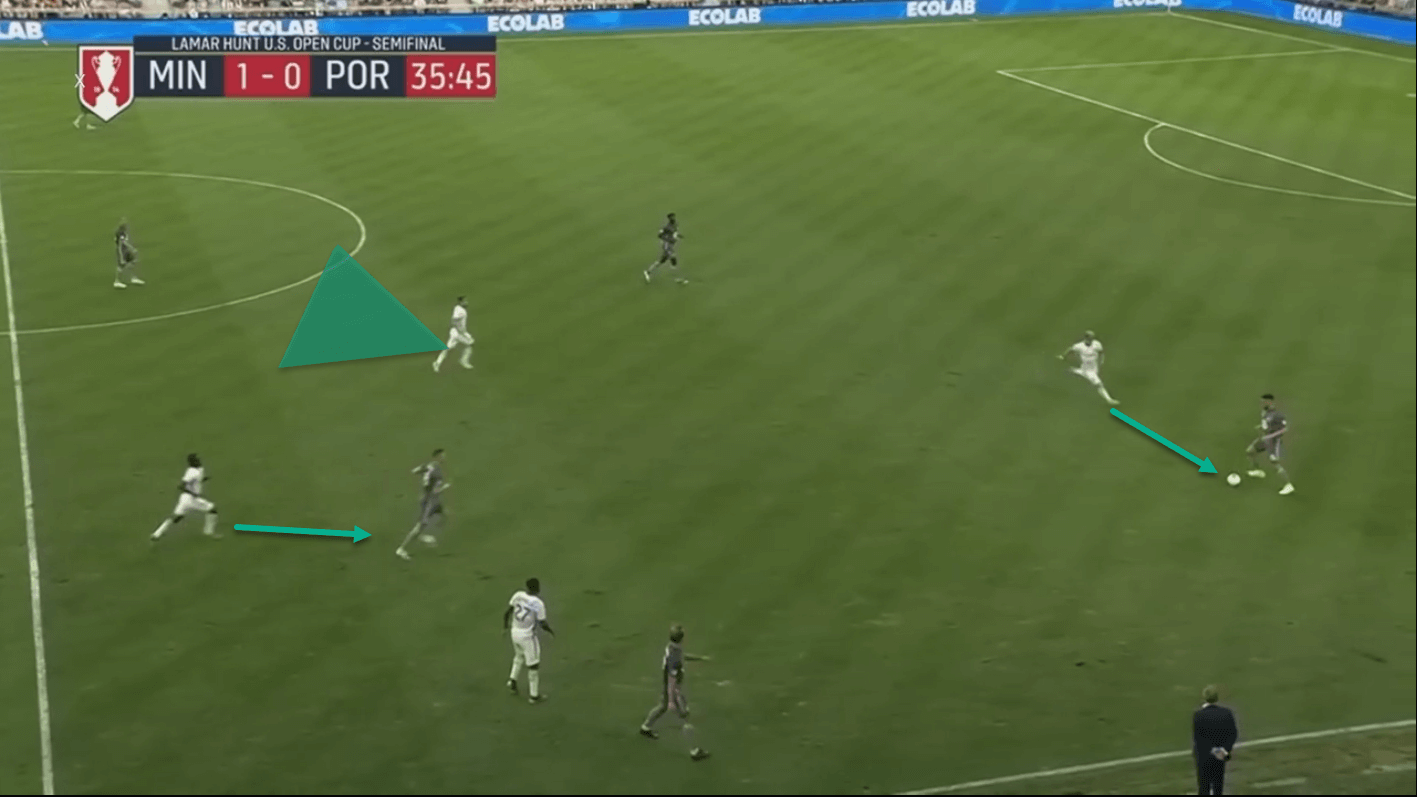
As we see in the image above, after Minnesota recovers the ball, Portland immediately closes down the ball and cuts off the nearest passing options. This scene was repeated over and over in the final 15 minutes of the first half, and the first 10 minutes of the second half. In this period, Minnesota United struggled to get out of their half of the pitch. As a result of the Loons passivity, Portland was able to equalise in first-half stoppage time.
After Toye’s goal in the 64th minute, Minnesota United switched personnel to enact this more defensive structure. Minnesota United switched to a 4-3-3, with Dotson coming on in place of Darwin. The additional midfielder made it easier for the Loons to bypass Portland’s initial press, and control possession better. They still struggled to create clear chances, but they were now able to hold possession and take the sting out of the match.
Conclusions
It’s often hard to beat a team twice in a week, but Minnesota United did an excellent job of limiting Portland’s most dangerous attackers in both matches. Their defence allowed little space for Fernández to break into, and Minnesota United was in control for most of this cup fixture. This victory means that Minnesota United will play in their first cup final, in their third year of existence.
The progress that this club has made in the past three years has been nothing short of incredible, as they have progressed from having one of the worst defences in MLS history to a side that can limit a dangerous Portland attack to one goal in 180 minutes. With one obstacle remaining, Minnesota United will travel to Mercedes-Benz Stadium to face Atlanta United for the 2019 US Open Cup.
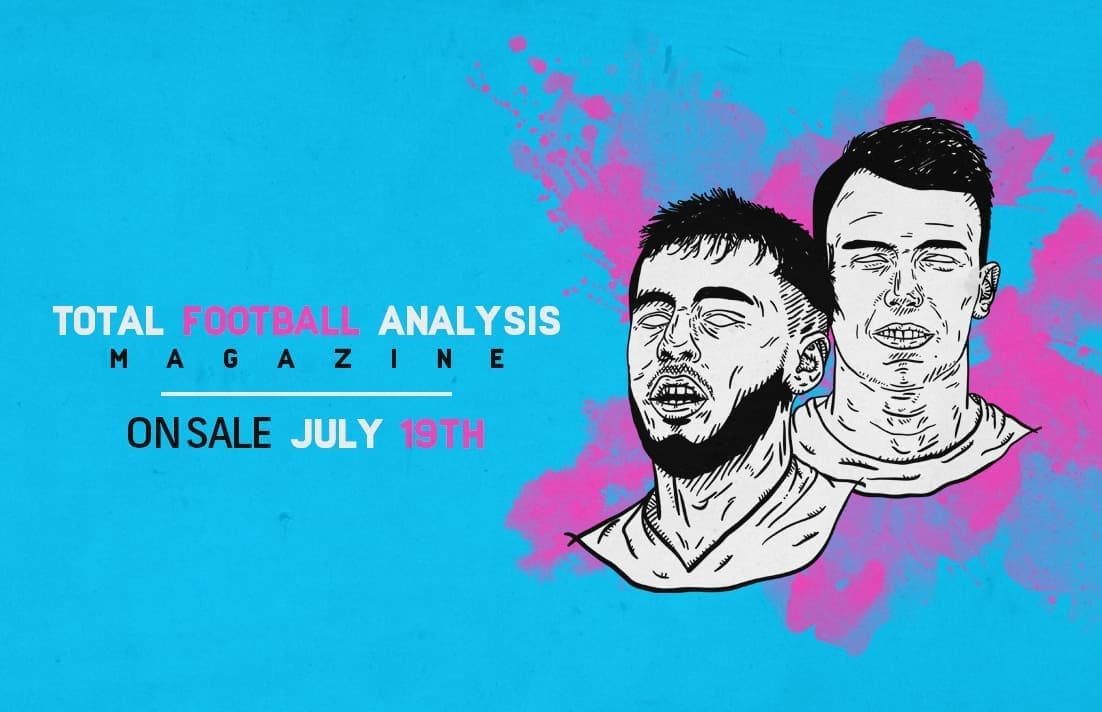
If you love tactical analysis, then you’ll love the digital magazines from totalfootballanalysis.com – a guaranteed 100+ pages of pure tactical analysis covering topics from the Premier League, Serie A, La Liga, Bundesliga and many, many more. Buy your copy of the July issue for just ₤4.99 here, or even better sign up for a ₤50 annual membership (12 monthly issues plus the annual review) right here.

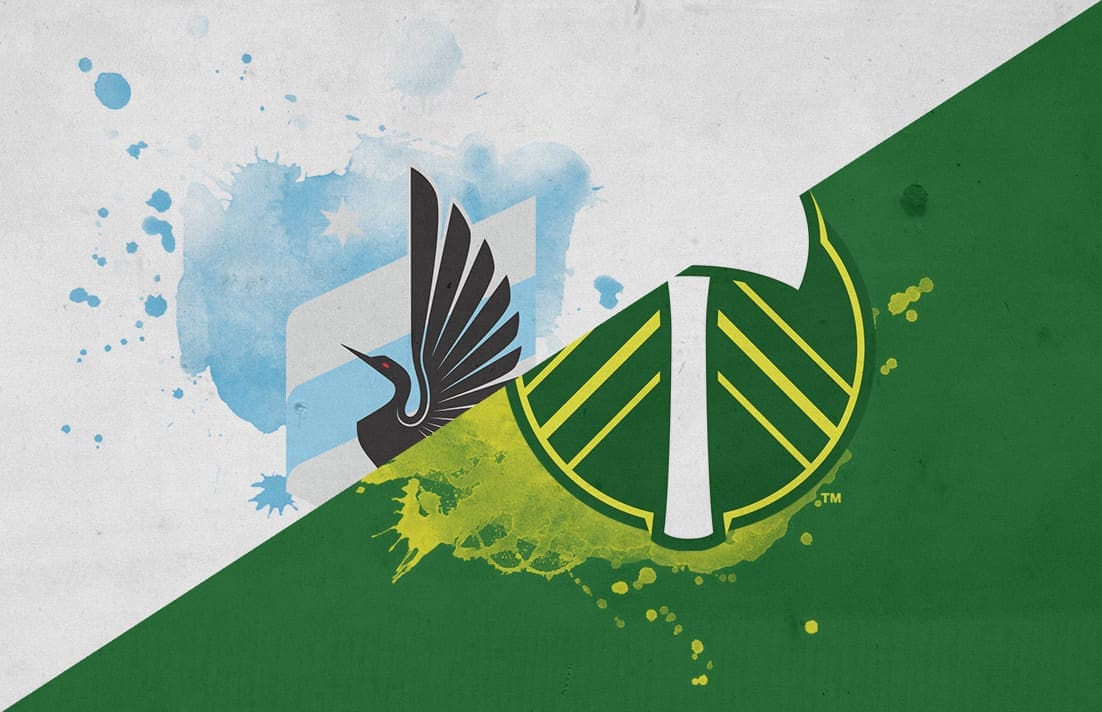



Comments